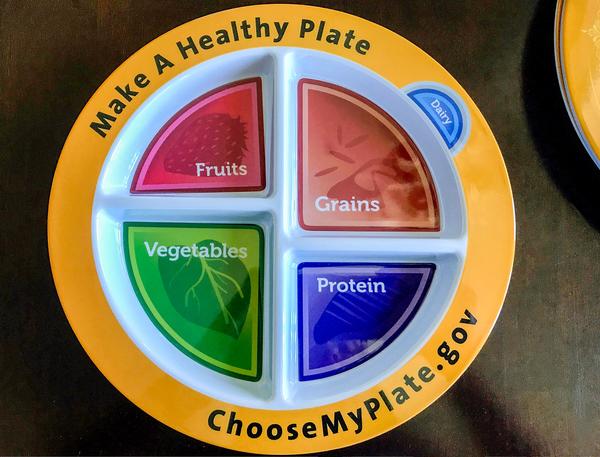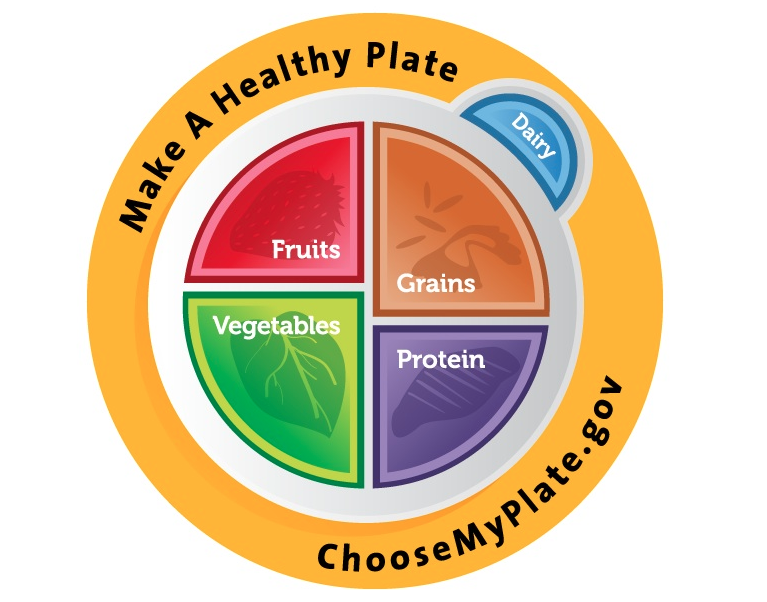A recent study in a Colorado preschool found that providing children’s plates with compartments with images of fruits and veggies increased how much they added to their plate and consequently, consumed.
The study included 325 children. For three days during lunchtime in one week, kids were given plates with pictures of fruits and vegetables. Observations were done to see how much they added to their plates and ate. Those days were then compared to three days in a prior week with their normal plain white plates. 1
According to the study, kids served themselves about 44 grams of vegetables each day using the experimental plates, in comparison to 30 grams using their regular plates. In addition, they consumed more veggies: an average of 28 grams using experimental plates versus 21 grams with regular white plates.1
Using experimental plates, kids served themselves approximately 64 grams of fruit, an increase from about 60 grams previously. They ate an average of 55 grams of fruit using experimental plates compared to 51 grams previously.1

Emily Melnick, the study’s co-author from the University of Colorado states, “Pictures on lunch plates may indicate a social norm of vegetable and fruit consumption to nudge children’s dietary behaviors in a classroom setting. These pictures suggest that other children take fruits and vegetables from classroom serving bowls and place them in those compartments and that they should do the same,”.1
Melnick believes the kids in the experiment, similar to children in several preschool classrooms, ate family style meals as this type of dining behavior can encourage children to regulate their food intake, feel in control regarding food choices, learn about food and recognize hunger levels.1
Prior to the study, researchers weighed how much fruit and vegetables kids served themselves using regular white plates over the course of three days. A five-minute presentation was provided by the researchers to the children for the experiment week explaining the new plates with images showing compartments for fruits and vegetables at the start of the week. Children were provided the same meals before the study, and researchers repeated weighing how much children gave themselves and consumed.1
Although kids increased both the amount of fruits and vegetables they served themselves and ate, the difference in fruit intake was too small to rule out the possibility of it being due to chance. Children were eating more fruit than vegetables to start with, the researchers noted in their JAMA Pediatrics article. Children took close to 89% of available fruits versus 65% of available vegetables.1 In children, fruit intake has increased, though fruit and vegetable intake remain too low, according to the CDC. 2
Vandana Sheth, a spokesperson for the Academy of Nutrition and Dietetics and dietitian in private practice notes it’s not clear if the classroom experiment could be repeated at home. She states, “If this is repeatable at home, it can be a simple technique practiced by families and have a significant impact on their long-term health. “We know that early childhood dietary behaviors can affect their food choices and eating decisions into adulthood and have a long-term effect,” Sheth added. “If something as simple as putting pictures on plates to encourage food choice and amount can work, it’s worth a try.” Sheth was not involved in the study.1
If you need help getting your kids, other family members or clients to eat more produce, check out Food and Health’s variety of My Plate Plates: https://nutritioneducationstore.com/collections/myplate-plates

References:
2. Li, Meng, Melnick, E Association of plate design with consumption of fruits and vegetables among preschool children. JAMA Pediatr. Published online August 6, 2018. doi:10.1001/jamapediatrics.2018.1915
Submitted by Lisa Andrews, MEd, RD, LD


